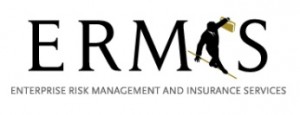
Boots on the Street
Ahren Hohenwarter, CPCU, CWCA
Hired and Non-Owned Auto Exposures
Often over looked, Hired and Non-Owned Automobile exposures can potentially put your business and its assets at risk. Hired Automobile Exposures arise out of the use of a vehicle rented in the company’s name by an employee, independent contractor or volunteer while conducting company business (e.g. Sales Persons). Non-Owned Automobile Exposures are created when an employee, independent contractor or volunteer operates their personal vehicle on behalf of the company. This could be as simple as a quick trip to the bank or as complex as managing a large traveling sales force; liability can arise out of both scenarios.
Although employees are responsible for safely operating their own vehicles and maintaining their own auto insurance policy, your company could possibly be drawn into the situation through vicarious liability including negligent hiring, negligent supervision and/or respondeat superior, under which the company is held liable for an employee’s act or omissions arising in the course of employment. If the employee did not carry insurance, carried inadequate limits to cover a claim, did not properly maintain the vehicle or had a poor driving record, action might be brought against you as the employer. In order to mitigate the risk created by these exposures the following controls can be implemented:
- Establish a Company Provided/Personal Vehicle Use Policy as part of your employee handbook and/or safety manual and require all employees to acknowledge receipt and understanding of the policy.
- Require all employees who operate their personal vehicles on company business to add the company as additional insured or additional interest on their personal automobile insurance policy and provide proof of such and adequate limits of liability. Your insurance agent or broker can help determine adequate limits and the program can be administered either manually or through various electronic certificate control programs available.
- Obtain periodic MVRs on all employees that operate a vehicle on behalf of the company and evaluate them against established driver acceptability standards.
- Inspect employee vehicles to ensure they are in good operating condition and that all safety devices are in proper working order.
- Document, document, document; because if there is no documentation, it didn’t happen.
For more information on this topic or a review of your policies and procedures, please contact me.
Ahren Hohenwarter, CPCU
Director of Field Services
Phone: 209-550-3769
Ahren@enterpriseriskmgt.com

